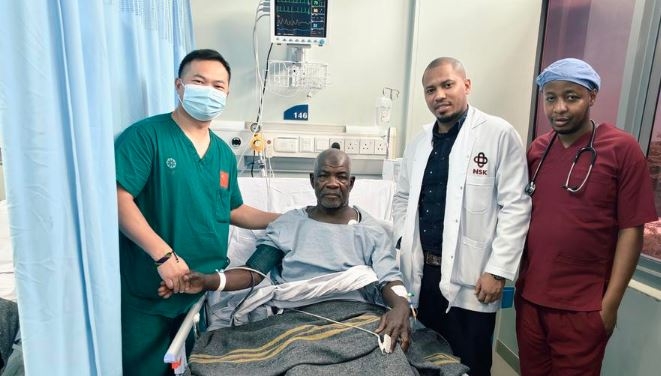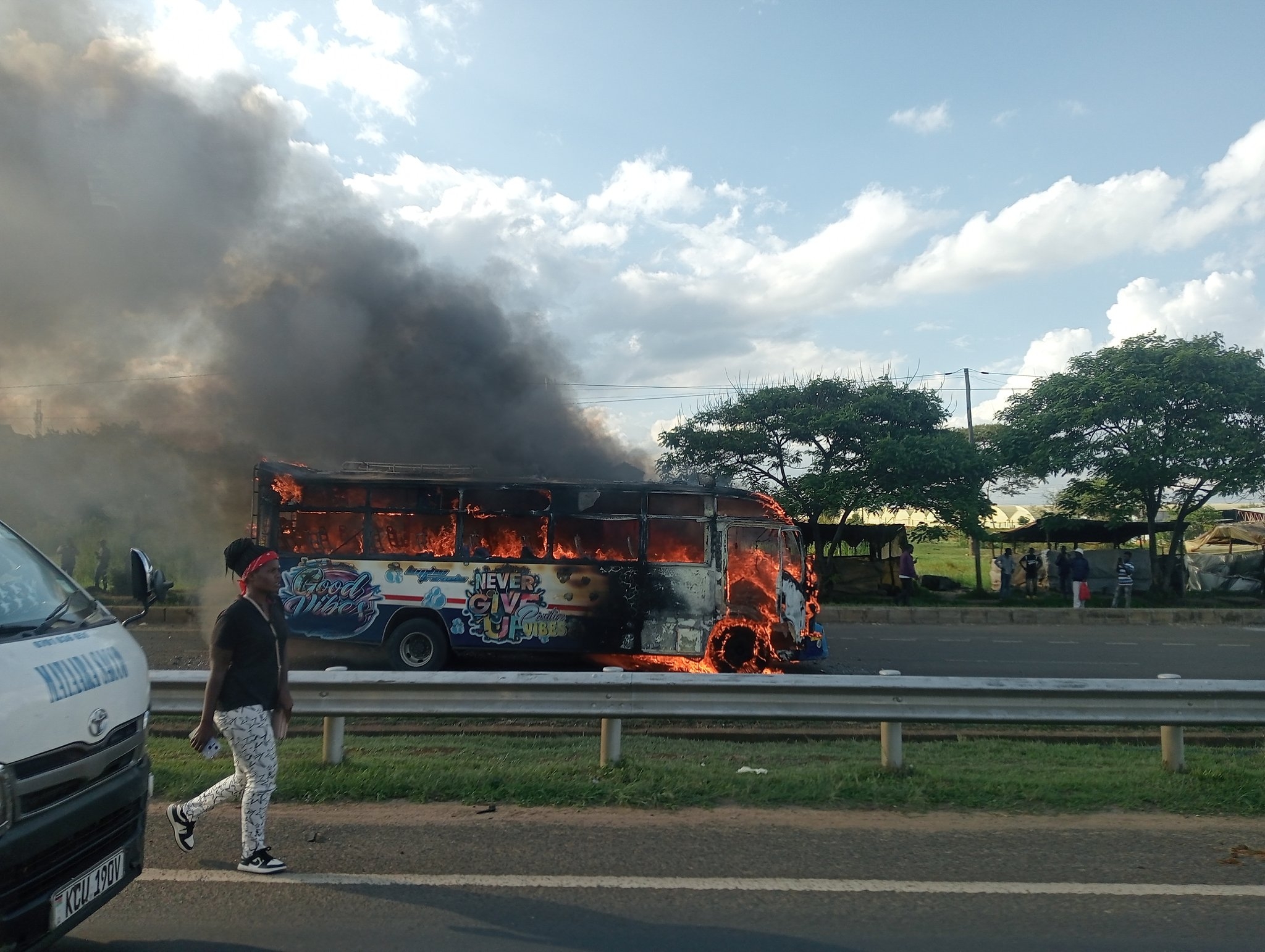The intensive care units in hospitals have been stretched beyond limit due to Covid-19 admissions as the third wave of infections ravages the country.
Health officials said ICUs are near or in some cases past capacity.
The major referral hospitals have run out of beds in their ICUs, with many more on the brink of being overwhelmed as Covid-19 hospitalisations spike.
Health officials in Kenya's major cities of Nairobi, Mombasa, Nakuru, Kakamega and Kisumu yesterday said even makeshift facilities could be overwhelmed in the next few days.
Nairobi has already exceeded its ICU capacity. Mombasa and Kisumu are dangerously close. And the same scenario is playing out in Kakamega, Nyeri, Nakuru, Eldoret and Thika.
The main public hospitals are being forced to decide which critically ill Covid-19 patients to save and who to let go after running out of beds in the ICU.
The current surge of infections appears to mirror a projection the Kenya Medical Research Institute gave in January, showing that a new wave of infections and deaths would peak mid-March.
On Tuesday, the Mbagathi Hospital, Kenyatta National Hospital and the Kenyatta University Teaching, Referral and Research Hospital in Nairobi were not admitting new Covid-19 patients after running out of space in the isolation wards.
The ICU beds reserved for Covid-19 patients were also full, with indications the situation might worsen.
“We can only admit after discharging a patient who has recovered, or after a patient dies,” said a doctor stationed at the KUTRRH isolation wards.
He said those admitted are carefully selected so that the critical cases are given priority.
The total ICU bed capacity across the 47 counties is 492 with another 13,272 set aside for isolation, the Kenya Medical Practitioners and Dentists Council said in October last year.
At the end of last year, KUTRRH had 456 isolation and 20 ICU beds and Mbagathi 120 isolation and four ICU beds.
The Mama Lucy Kibaki Hospital had 32 beds for isolation and 18 in the ICU while the Kibera South makeshift has 50 isolation beds.
In January this year, Kemri Welcome Trust predicted that 13,700 new Covid-19 cases and 116 new Covid-19 deaths would be reported by June 1, 2021, as a direct result of school reopening and learners going back home.
"We found that, in the Kenyan setting, reopening schools would increase reproductive number by +25 per cent," the scientists said in a policy brief that was widely condemned by Education CS George Magoha.
"Under the most plausible scenario, we project that the rate of Covid-19 case and death incidence will peak in mid-March 2021," they added.
The scientists said they were confident this would happen because of mixing of the school children among themselves and with other people in the society.
They said the scientific consensus is that reopening schools increases the transmission rate of Covid-19, because of mixing of clusters.
They noted that they correctly predicted the first wave to happen in July last year but did not predict the second peak in November 2020 which was related to relaxation of restrictions and increased movement.
On January 23, Magoha roundly condemned Kemri, saying school reopening would not lead to spike in cases when learners go back home.
He said they would rely on God and masks.
“I’m a top scientist and surgeon. The people I have trained are professors. Since we opened schools we are in the end of the third week. The figures yesterday were 2.3 per cent (infection rate). Do you want me to listen to your politics or listen to facts. By the grace of God the children are masked. How many have you heard have corona?” Magoha posed.
On Tuesday, the positivity rate was hovering around 20 per cent, according to the Ministry of Health.
The country recorded 1,127 new cases from a sample size of 5,393, representing a positivity rate of 20.8 per cent.
The deaths also continued to rise after 25 fatalities were reported by Health CAS Rashid Aman, raising the number of those who have succumbed to the virus to 2,048.
He said 135 patients were admitted in the ICU, 34 on ventilator support, 93 on supplemental oxygen and eight under observation. Another 55 patients were separately on supplemental oxygen, 42 in the general wards and 13 in the high dependency unit.
The surge has also forced the Public Service Commission to scale down operations by 50 per cent beginning next week.
Commission CEO Simon Rotich said staff will work on a one to two-weeks shift in which they will alternate between the work place and home.
“All PSC secretariat staff will with effect from Monday 29, March 2021, work on a rotational work shift schedule, up to the lapse of the 60 days containment timeline announced by His Excellency the President during his address to the nation on Friday March 12,” Rotich’s memo reads.
The situation is also worsening for health workers, with doctors announcing 10 colleagues were admitted.
“The rising numbers of infections have not spared healthcare workers. Ten doctors are currently admitted," Kenya Medical Practitioners Pharmacists and Dentists Union acting secretary general Chibanzi Mwachonda said on Tuesday.
In total, 17 doctors have succumbed to Covid-19, the union said.
At least 34 nurses had died by last week. Kenya Union of Clinical Officers' secretary general George Gibore told the Star Covid-19 has killed 13 clinicians.
Head of the Lancet laboratories Ahmed Kalebi said demand for tests has also risen and the company had expanded its capacity.
The laboratory is returning results within 12 hours compared to 48 in the past.
Kalebi said the Covid-19 situation in Kenya had worsened in the week of March 15 -21.
“Unfortunately increased numbers of new Covid-19 infections with high number of hospitalisations plus community transmission due to high positivity rates translate to more deaths down the line so we need to brace ourselves for much tragic news in the coming days or weeks,” he said.
In Machakos, Governor Alfred Mutua said all the county’s level 5 hospitals' 15 ICU beds and the additional 12 HDU beds were full of severely ill patients.
In a tweet, the governor warned members of the public that the situation was so that “people are waiting for others to die to get a bed.”
“Nikubaya (It is dire): All Machakos 42 ICU/HDU beds with oxygen points also full. People are waiting for others to die to get a bed.”
Emergency care experts said Kenya is unprepared to handle the surge because it lacks a proper emergency medicine capacity.
Secretary of the Emergency Medicine Kenya Foundation Dr Benjamin Wachira said lack of national triage guidelines in Kenya could lead to the healthcare facilities being overwhelmed by Covid-19 patients.
“Efficient triage of patients with Covid-19 at the emergency department will help hospitals in the country cope with the patient influx, direct necessary medical resources to efficiently support the critically ill and protect the safety of health-care workers,” he said.
He said the World Health Organization algorithm for Covid-19 triage and referral during community transmission in poor countries should be adopted to categorise patients into those that can be isolated in the community, those needing admission to the hospital and those needing ICU care.
“With no organised prehospital emergency care system, insufficient emergency centres, ICU beds and ventilators, many of these patients will be at risk of significant morbidity and mortality,” he said in an article in the African Journal of Emergency Medicine.
In March last year, a group of doctors and academics from around the world published a set of ethical guidelines in the New England Journal of Medicine, outlining how to ration resources during the Covid-19 pandemic.
Among the recommendations was that the usual approach of treating people on a “first-come, first-served” basis should not apply.
The guidelines prioritise severely ill patients who are younger and who have fewer existing health conditions, and therefore have the greatest chance of survival.
Edited by P.O












